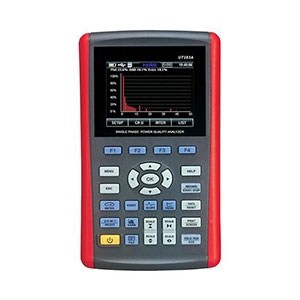Power Quality Analyzers
3 Phase Portable Power Quality Analyzer
3 Phase Smart Harmonic Power Analyzer
Handheld Single Phase Power Quality Analyzer
Three Phase Power Quality Analyzer
Power quality analyzers are specialized instruments designed to assess and diagnose the quality of electrical power in various systems. They provide detailed insights into the performance of electrical networks by measuring, recording, and analyzing a range of parameters that affect power quality. These include voltage fluctuations, harmonics, transients, power factor, and imbalances, which are critical for ensuring the stability, efficiency, and safety of electrical systems.
These analyzers are equipped with advanced features such as waveform capture, harmonic analysis, and event logging. They can monitor power quality continuously over extended periods, providing comprehensive reports that highlight any deviations from standard power conditions. This makes them invaluable for preventive maintenance, troubleshooting, and ensuring compliance with industry standards such as IEEE 519 or EN 50160.
Features of Power Quality Analyzer

Power quality analyzer come with several advanced features that make them indispensable tools for monitoring and maintaining electrical systems. Key features include:
- Real-time Monitoring and Data Logging: Capable of continuously monitoring electrical parameters such as voltage, current, frequency, and power factor, and logging data in real-time for long-term analysis.
- Harmonic Analysis: Detects harmonic content in the power system, helping to identify power quality issues caused by nonlinear loads.
- Waveform Capture and Event Recording: Able to capture abnormal waveforms and record power events such as voltage sags, swells, and transients, aiding in the quick identification and diagnosis of problems.
- Multi-channel Input: Supports simultaneous multi-channel input, enabling the monitoring of parameters across all phases in a three-phase system, providing a comprehensive view of power quality.
- Remote Monitoring and Data Export: Many power quality analyzers support remote monitoring and data export, allowing users to access and manage data through software or network interfaces.
Working Principles of Power Quality Analyzer
Power quality analyzer operate by collecting current and voltage signals from the electrical system through current transformers and voltage sensors. These signals are converted from analog to digital and then processed and analyzed by an internal microprocessor. The analyzer uses mathematical methods such as Fourier Transform to break down the electrical signals into their frequency components, calculating parameters such as voltage, current, harmonics, and power factor.
The analyzer can also monitor changes in power waveforms and identify abnormal events like voltage sags and transient overvoltages. This data is stored internally or through external interfaces and can be displayed to the user via a screen or software interface. Users can view data in real-time or analyze stored data later to identify and resolve issues in the electrical system.
Power Quality Analyzer Application
- Industrial Environments: Used to monitor and diagnose power quality issues in factories and manufacturing facilities, preventing equipment downtime and production losses due to power disturbances.
- Data Centers: Ensures the reliability of power supply within data centers, preventing server failures or data loss caused by power quality issues.
- Power Utilities: Helps power companies evaluate the operation of the grid, ensuring that the quality of power supply meets standards and providing data support for optimizing the power network.
- Commercial Buildings: Used to monitor energy consumption and power quality in commercial buildings, helping to manage energy efficiency and reduce operating costs.
- Research and Education: Serves as a tool for power system research and education, helping students and researchers understand power quality issues and their solutions.
Power quality analyzers provide precise measurements and detailed data analysis, helping users gain a comprehensive understanding of the state of their electrical systems and take action to ensure the system operates stably and efficiently.





